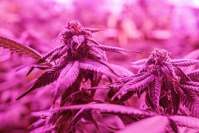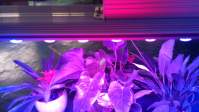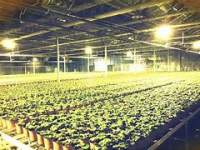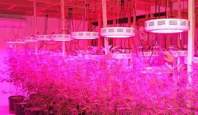LED plant lights are very suitable for plant planting, allowing plant planting to go from outdoor planting to indoor planting, making a great contribution to the development of modern agriculture. LED plant lights are becoming more and more popular, and more and more people buy them. However, 12 misunderstandings about LED plant lights have been misleading people. Let’s take a look at what are the 12 misunderstandings of LED plant lights? What is the truth?
1. Ordinary LED plant lights can be used for plant growth
Some people think that ordinary LED plant lights can be used for indoor planting, and you don't need LED plant lights specially made for plants. This is partially correct. Ordinary LED plant lights can be used to help plants grow. But the effect is obvious. What plants need is the same spectral wavelength LED plant light for supplement light. The light quality of the LED plant light needs to be proportioned according to the plant, and the spectrum required for each stage of plant growth can be adjusted, so as to give the plant better Growth,
Therefore, ordinary LED plant lights are not suitable for the growth of plants, and LED plant lights must be customized according to plant needs.
2. LED plant lights are very expensive
Compared with other lighting types, LED plant lights require higher start-up costs because the lights themselves are more expensive. But you must understand that the high operating cost of plant LED plant lights is for the better growth of plants, and the LED plant lights have high efficiency, low energy consumption, low heat generation and long lamp life, but the benefits brought by them are rewarded. High, comprehensive late-stage cost, much cheaper than traditional lamps.
3. LED plant lights convert all electricity into light
LED plant lights are very good at converting electricity into light. But it did not turn all electricity into light. This kind of technology simply does not exist. In fact, LED plant lights convert about 80% of electricity into light. No other type of lamp can achieve such a high efficiency, so these lamps hardly waste electrical energy.
4. Only need yellow light and green light
This is due to human error. Plants evolve with the sun and use light to initiate photosynthesis. When we think of the sun, we think of yellow light. Although yellow light helps photosynthesis a bit, the effect is minimal. Plants need red and blue light the most. Most LED plant lights are manufactured with this in mind, but some use completely wrong colors. Be sure to choose full-spectrum or dual-spectrum bands with red and blue.
5. Watt and other brightness
The reason for this misunderstanding is understandable. If we talk about any other type of light bulb, then watts equals brightness. 100 incandescent bulbs will be brighter than 80W bulbs, but LED plant lights are not the same. Wattage is just a measure of the power drawn by the lamp from the socket. Although higher wattage lamps are usually bright, sometimes lower wattage lamps are brighter than higher wattage lamps.
6. LED plant lights will not generate heat
The operating temperature of LED plant lights is lower than other growth light technologies. LED light source is a cold light source. Some people think that this means that these lights are cold to the touch. It just looks cold to people. All electronics Products all produce heat, and LED plant lights are no exception, but the heat produced by LED plant lights is much less than other plant lights. Generally, in colder places, LED plant lights can also play a role in temperature control.
7. Blue light supplements vegetables, red supplements flowers
This part is correct. For other growing lights, blue light is indeed more suitable for supplementing light on vegetables, while red light is more suitable for supplementing light during flowering. For optimal overall growth, plants need red and blue light throughout their life cycle. This leads to the strongest and largest growth and improves the overall health of the plant. Although turning off one color or another can save power, if you want the best plants, it's best to turn them on at the same time.
8. LED plant lights do not burn crops
This is related to the misunderstanding that LED plant lights do not produce heat. Many people believe that because LED plant lights are cold light sources, they cannot burn plants. If the power of the LED plant grow light is low, it will generally not cause burn damage to the plant, but if the high-power LED plant light is too close to the plant, it will burn the plant.
This can be avoided by correctly adjusting the distance between the LED plant light and the plant at least one foot. If you are careful, then you don't have to worry about burns.
9. The higher the power, the better the lamp
The semiconductor chip determines how many watts each LED consumes. You will find that the most common semiconductors are 3W, 5W and 10W. In most cases, 5W will be brighter than 3W, and 10W will be brighter than 5W. This is not always the case. This is why you must check the lumens and make sure to get as much light as possible. Some higher wattages run at lower efficiency, so they generate less heat. This means that you may get roughly the same amount of light as 3WLED, but you pay more.
10. LED plant lights use hazardous materials
Many people believe that LED grow lights are made of mercury, lead and other harmful materials. There are safety standards to ensure that all lights produced are safe. When using these LED plant lights, you don't have to worry about coming into contact with any hazardous materials.
Now that you have a better understanding of the principles of these LED plant lights, it is time to consider choosing LED plant lights that suit your needs. No longer be disturbed by these misunderstandings.






